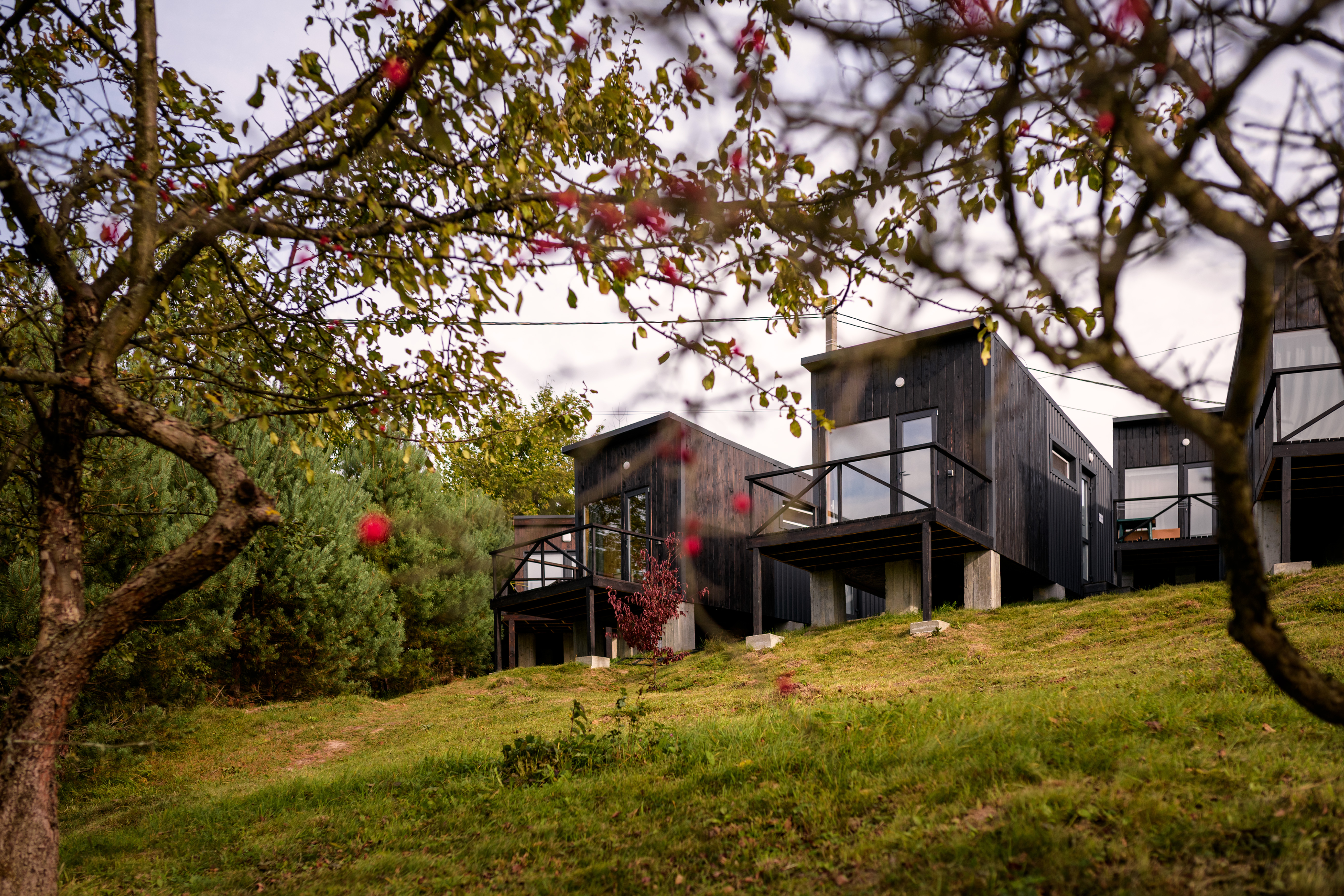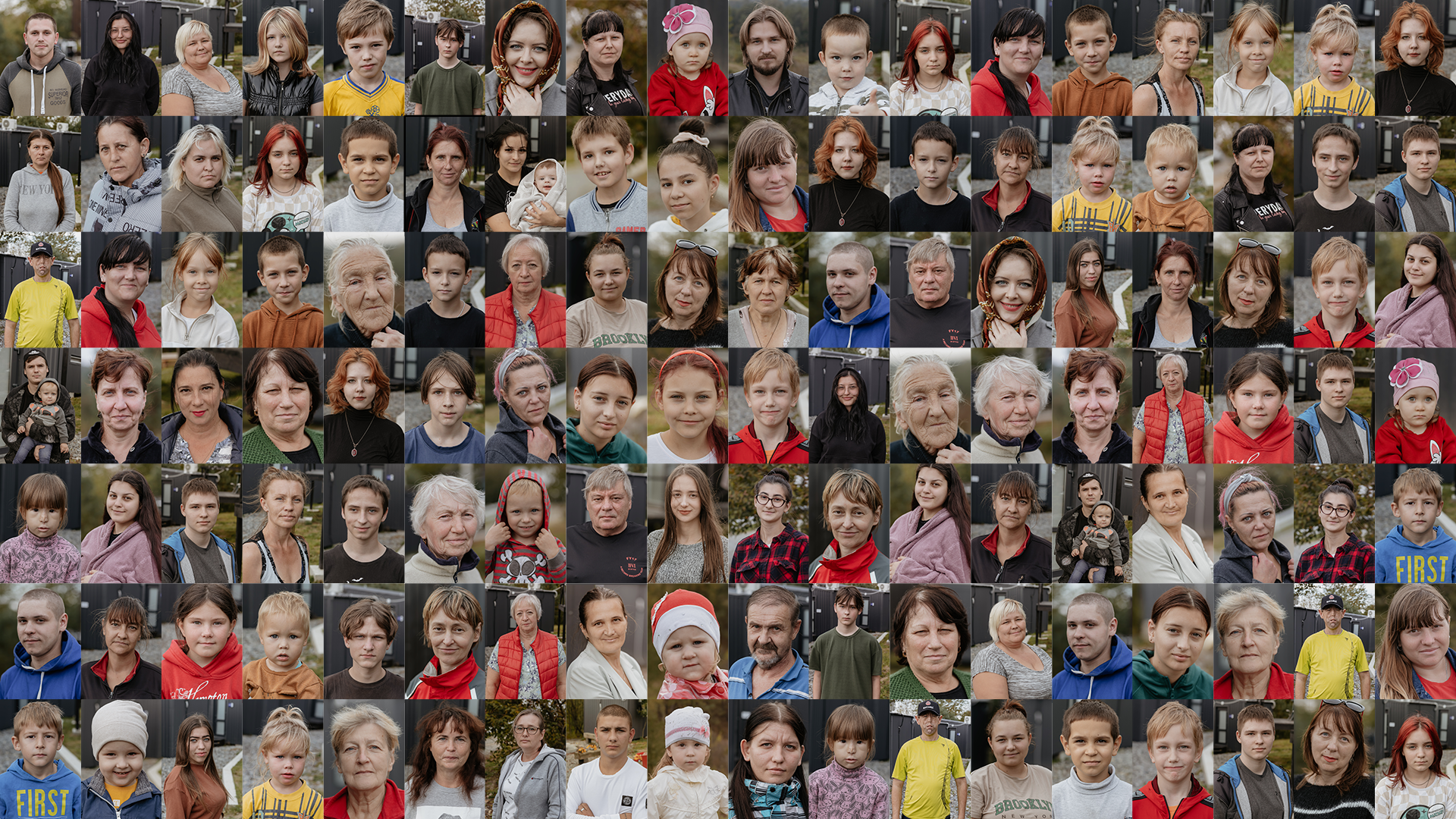Prioritising the places and people that need it the most
Leo States
Leo States Shelter
Leo States is the largest privately owned modular shelter for internally displaced people who lost their homes due to the war in Ukraine. Building hope, restoring lives - together, we're making a difference for Ukrainian families in need.
EU Member State, Western Balkans or Ukraine
Ukraine
National
No
No
It addresses urban-rural linkages
It refers to a physical transformation of the built environment (hard investment)
Yes
2023-10-01
No
No
Yes
Yes
Yes
As an individual
The project's goal is to provide temporary, comfortable housing for Ukrainian families whose homes have been destroyed due to the war in Ukraine or are under occupation. The primary objective of accommodating 200 individuals has been achieved.
Secondary Achieved Objectives: providing self-sustenance for the settlement, facilitating the integration of displaced individuals, including ensuring employment opportunities, offering medical services, delivering all necessary humanitarian aid and ready meals.
Secondary Achieved Objectives: providing self-sustenance for the settlement, facilitating the integration of displaced individuals, including ensuring employment opportunities, offering medical services, delivering all necessary humanitarian aid and ready meals.
Volunteering
Home
Support
Refugees
Integration
Energy Efficiency: The project was focus on energy-efficient design and construction techniques for its temporary housing units, reducing energy consumption and carbon emissions.
Use of Renewable Resources: Utilizing renewable materials and energy sources in the construction and operation of housing units.
Circular Economy: Implementing principles of a circular economy by recycling and reusing materials whenever possible.
Use of Renewable Resources: Utilizing renewable materials and energy sources in the construction and operation of housing units.
Circular Economy: Implementing principles of a circular economy by recycling and reusing materials whenever possible.
Integration with Nature: Designing the housing units and settlement to harmonize with the natural environment, promoting a sense of well-being and aesthetics.
Cultural Heritage: Incorporating elements of local cultural heritage into the design and architecture, creating a unique and culturally rich environment.
Cultural Heritage: Incorporating elements of local cultural heritage into the design and architecture, creating a unique and culturally rich environment.
Accessibility: Ensuring that housing units and infrastructure are accessible to people of all abilities.
Community Engagement: Involving the local community and displaced individuals in the planning and design process to create a sense of ownership and inclusivity.
Social Integration: Implementing programs and initiatives that facilitate social integration and cohesion among displaced families.
Community Engagement: Involving the local community and displaced individuals in the planning and design process to create a sense of ownership and inclusivity.
Social Integration: Implementing programs and initiatives that facilitate social integration and cohesion among displaced families.
In total, more than 50 volunteers were involved in the project, including architects, builders, designers.
The first residents of the village got jobs related to the construction and further development of the village. We involved people from such specialties as builders, plumbers, electricians, gardeners, carpenters, cleaners, and cooks.
Also, many people gained new professional skills.
Citizens and local communities were engaged through consultation meetings, surveys, and public forums to gather their input, preferences, and concerns regarding the project.
Their feedback can influenced project decisions, such as the design of housing units, infrastructure, and amenities, to better meet their needs and preferences.
Civil society organizations, including non-governmental organizations (NGOs), were partners of the project and provide their expertise, resources, and support for various aspects of the initiative.
The first residents of the village got jobs related to the construction and further development of the village. We involved people from such specialties as builders, plumbers, electricians, gardeners, carpenters, cleaners, and cooks.
Also, many people gained new professional skills.
Citizens and local communities were engaged through consultation meetings, surveys, and public forums to gather their input, preferences, and concerns regarding the project.
Their feedback can influenced project decisions, such as the design of housing units, infrastructure, and amenities, to better meet their needs and preferences.
Civil society organizations, including non-governmental organizations (NGOs), were partners of the project and provide their expertise, resources, and support for various aspects of the initiative.
Local residents and community members were engaged through public meetings, surveys, and consultations to gather their input and preferences for the project.
Local entrepreneurs provided our project with 6200 m2 site on rights of longterm free of cost rental.
Local businesses were engaged as partners for employment opportunities, supply chain support, and financial contributions.
National-level NGOs offered us expertise in humanitarian assistance, social and medical services, and advocacy.
European and USA NGOs and International companies provided donations for our project and their expertise.
Local entrepreneurs provided our project with 6200 m2 site on rights of longterm free of cost rental.
Local businesses were engaged as partners for employment opportunities, supply chain support, and financial contributions.
National-level NGOs offered us expertise in humanitarian assistance, social and medical services, and advocacy.
European and USA NGOs and International companies provided donations for our project and their expertise.
Architects and rural planners played a crucial role in designing the physical layout, structures, and infrastructure of the project, ensuring functionality and aesthetics.
Engineers were responsible for the technical aspects of the project, such as structural integrity, utilities, and construction materials.
Sociologists and social workers contribute to understanding the social dynamics and needs of the affected communities.
Medical professionals were involved in assessing and addressing the healthcare needs of the project's beneficiaries.
Experts in economics and finance help with budgeting, fundraising, and ensuring the project's financial sustainability.
Legal experts navigated the regulatory landscape, permits, and compliance with local and national laws to complete the project.
Professionals with experience in humanitarian aid and development bring expertise in delivered assistance to displaced populations.
Engineers were responsible for the technical aspects of the project, such as structural integrity, utilities, and construction materials.
Sociologists and social workers contribute to understanding the social dynamics and needs of the affected communities.
Medical professionals were involved in assessing and addressing the healthcare needs of the project's beneficiaries.
Experts in economics and finance help with budgeting, fundraising, and ensuring the project's financial sustainability.
Legal experts navigated the regulatory landscape, permits, and compliance with local and national laws to complete the project.
Professionals with experience in humanitarian aid and development bring expertise in delivered assistance to displaced populations.
The main difference of our project from similar ones is that we have provided the comfort of permanent housing in temporary accommodation by adding individual kitchens, bathrooms, terraces, and in some cases, kingsize beds to our modular units. Furthermore, the location we've chosen for the modular community is more suited for a sanatorium or resort, thanks to its natural surroundings and nearby infrastructure, including lavender fields, vineyards, lakes, and additional spaces, rather than being a conventional shelter site.
House by house, block by block, we improved the quality and comfort of temporary housing, based on the experience gained in operation. We initially ordered the first houses abroad, but after the 10th house, we switched to domestic production and developed several variations of our functional design
We employs modular housing units, the design and construction methodologies for these units can often be replicated in other locations. We already started to create second modular shelter in Kyiv region. This can be particularly useful in immediate emergency response situations or when providing temporary housing to displaced populations.
Successful community engagement approaches, such as participatory design processes, can be adapted and applied to similar projects. Engaging beneficiaries in decision-making and design can enhance the future projects relevance and acceptance.
Our project focused on accessibility and inclusivity, the design features and considerations that can be shared with other organizations working to create accessible environments for diverse populations.
Leo States project's partnerships with local, regional, national, or international stakeholders, including NGOs and government agencies, can serve as a model for effective collaboration and resource mobilization.
Successful community engagement approaches, such as participatory design processes, can be adapted and applied to similar projects. Engaging beneficiaries in decision-making and design can enhance the future projects relevance and acceptance.
Our project focused on accessibility and inclusivity, the design features and considerations that can be shared with other organizations working to create accessible environments for diverse populations.
Leo States project's partnerships with local, regional, national, or international stakeholders, including NGOs and government agencies, can serve as a model for effective collaboration and resource mobilization.
Housing and Displacement: Many regions around the world face displacement crises due to conflicts, natural disasters, or economic challenges. Our solution that provide temporary, sustainable housing to displaced populations contribute to addressing the global challenge of forced migration and homelessness
Humanitarian crises, such as conflicts and natural disasters, affect millions of people globally. Projects that offer immediate relief and support to affected communities at the local level can alleviate the consequences of these crises and contribute to global humanitarian efforts. It took us only two months from the idea to the settlement of the first people.
Humanitarian crises, such as conflicts and natural disasters, affect millions of people globally. Projects that offer immediate relief and support to affected communities at the local level can alleviate the consequences of these crises and contribute to global humanitarian efforts. It took us only two months from the idea to the settlement of the first people.
Leo States Shelter provided temporary, safe, and comfortable housing solutions for more than 200 displaced people who have lost their homes due to the war and has already provided more than 50,000 prepared meals for village residents.
Leo States focused on holistic community support, including access to basic amenities like clean water, sanitation, healthcare, and education, improving the overall well-being of beneficiaries.
Efforts were made to promote social cohesion and integration among displaced families, reducing isolation and fostering a sense of belonging in the community.
Our project included initiatives to provide beneficiaries with livelihood opportunities, job training and income-generating activities, helping them rebuild their lives and regain self-sufficiency.
Capacity-building activities empowered beneficiaries with skills, knowledge, and resources to participate actively in their community's development and decision-making processes.
By strengthening the resilience of vulnerable communities and providing psychological support by specialists, our project reduced future vulnerability to crises and enhance their ability to cope with adversity.
Access to healthcare services and health education leaded improved health outcomes for beneficiaries, reducing the risk of disease and mortality.
We raised awareness about the challenges faced by displaced people.
Leo States broadered positive impacts on the host communities and regions by promoting economic development, social cohesion, and improved infrastructure.
Our successful projects best practices, can contribute valuable knowledge that can be shared with other organizations and applied in different contexts.
Leo States focused on holistic community support, including access to basic amenities like clean water, sanitation, healthcare, and education, improving the overall well-being of beneficiaries.
Efforts were made to promote social cohesion and integration among displaced families, reducing isolation and fostering a sense of belonging in the community.
Our project included initiatives to provide beneficiaries with livelihood opportunities, job training and income-generating activities, helping them rebuild their lives and regain self-sufficiency.
Capacity-building activities empowered beneficiaries with skills, knowledge, and resources to participate actively in their community's development and decision-making processes.
By strengthening the resilience of vulnerable communities and providing psychological support by specialists, our project reduced future vulnerability to crises and enhance their ability to cope with adversity.
Access to healthcare services and health education leaded improved health outcomes for beneficiaries, reducing the risk of disease and mortality.
We raised awareness about the challenges faced by displaced people.
Leo States broadered positive impacts on the host communities and regions by promoting economic development, social cohesion, and improved infrastructure.
Our successful projects best practices, can contribute valuable knowledge that can be shared with other organizations and applied in different contexts.
PDF
- Downloadpdf-1-287.pdf
{Empty}
Yes
Yes
Yes
Yes
Yes
Yes
Yes











